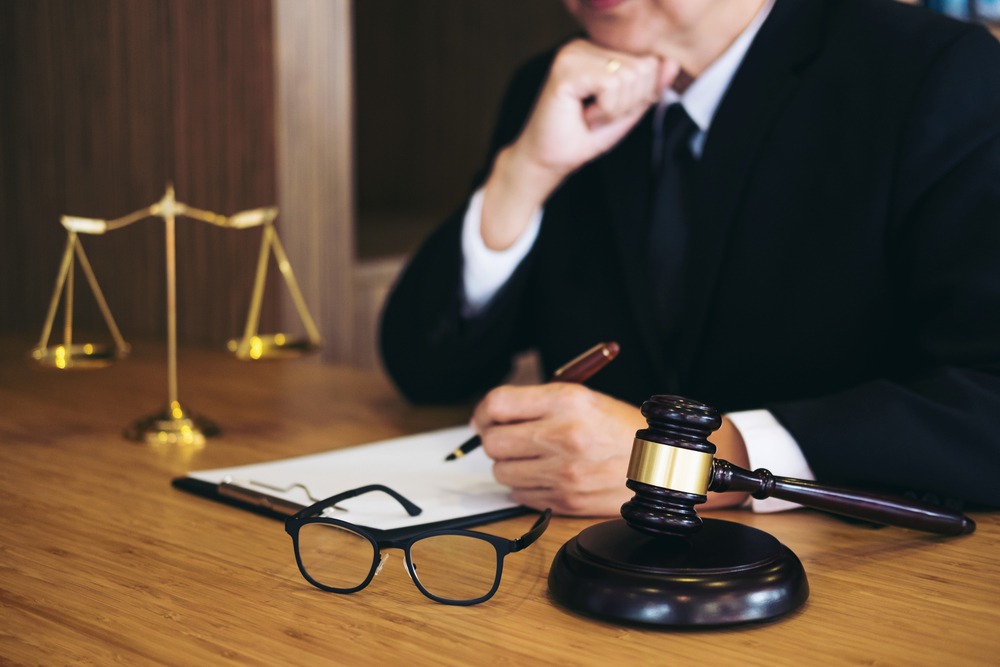
Cause-in-fact, or factual causation, refers to proving whether an action or incident caused harm. This process includes the much talked about ‘but-for’ test. But for simply refers to answering the question: Would a plaintiff have suffered harm but for a defendant’s actions?
So, this means that cause-in-fact should answer the but-for question. To do this effectively, you need evidence to prove cause-in-fact (whether a specific party is to blame for causing you harm or loss).
The But-For Test
In law terms, the “but-for” test is the go-to for determining cause-in-fact. Its purpose is to establish whether harm would have occurred if the defendant had not done what they did.
For example, a driver may run a red light, crash into another car, and cause the other driver injury. In this scenario, the but-for test asks whether the accident and injuries would have happened if the first driver had stopped at the red light.
In this case, it is clear that the first driver is responsible for the accident, and their actions are deemed the cause-in-fact of the injuries.
How But-For Applies to Different Legal Disputes
But-for tests apply to several legal cases. For instance, if someone slips and falls on a wet floor in a shop and breaks their leg, the but-for test must determine whether the owner was negligent and so directly caused the injury.
If the shop owner had put down a warning sign alerting people to the wet floor, the customer in question would likely have avoided the wet section and, by default, injury.
This means the injury would not have happened but for the owner’s negligence to warn customers about the wet floor. So, the test proves that the owner’s nonaction is directly related to the customer’s broken leg.
A but-for test can also prove cause-in-fact in a medical malpractice lawsuit. Say a patient undergoes a routine surgery only to get a severe infection afterward. Was the infection a foreseeable complication, or did the surgeon make a mistake and cause the infection?
In this instance, the question is whether the infection would have occurred if the surgery had gone off without a hitch. If not, surgeon error is most likely to blame for the infection.
The same goes for legal disputes about products. If a customer buys a power tool and it malfunctions, it can lead to severe injury. The but-for test must determine whether the injury would still have happened if the power tool did not malfunction.
So, if a well-functioning tool could not have caused the same injury, a product defect is likely to blame. This proves the cause-in-fact of the harm done. However, if the customer does not follow the safety instructions, the but-for test cancels itself.
Does the But-For Test Work in Complex Situations?
It may be challenging to use the but-for test in unusual situations. For instance, what if someone walks down the street in the rain only to be struck by a car? In this case, it could be the inclement weather and driver negligence that caused harm.
When something like this happens, a court may use the substantial factor test instead of the but-for test. This would evaluate which factor was more likely to have caused harm.
Also, the but-for test does not mean the defendant in a legal case should have anticipated the type of harm done. However, it does require the defendant to foresee the possibility of some form of harm.
So, if a driver crashes into a building and starts a fire, they cannot be liable for the fire. Essentially, the fire is not a foreseeable consequence of crashing into a building.
However, if there is a concert and someone starts throwing glass bottles around, it is foreseeable that injury could occur. At the same time, the concert venue should not have allowed people to bring glass bottles to the concert. So, the venue’s negligence in keeping the concert glass bottle-free would cause inevitable injuries.
What if an unforeseen event disrupts the action and consequence chain? For example, a person gets hit by a car but recovers in hospital. If they get an infection while in hospital, the driver is still liable for the initial injuries, even if the infection started later.
Proving Cause-in-Fact
The but-for test is the initial foundation of a legal claim. If you want to prove cause-in-fact, you must expand on this foundation.
This means that if someone or something injures you, you must gather evidence. This could include anything from medical records to witness testimonies. Ideally, you want documents that prove the sequence of events and link your injuries to these events.
You may have to create a timeline that outlines the defendant’s negligence or inaction.
Also, depending on the circumstances, you may need an expert witness to strengthen the causal connection between the alleged negligence and the event that led to your injury.
For instance, if you contracted an infection after surgery, a neutral medical expert could testify how a surgeon’s error would have led to the infection.
What About Proximate Cause?
You may also have to consider proximate cause. This concept is less cut-and-dried than cause-in-fact. It refers to establishing what falls within the scope of causation.
Proximate cause usually comes into play when an event has a massive causal chain. For example, a person skips a red light and crashes into you. Your car swerves over the road on impact, and you hit someone else. That driver also swerves, setting off a chain reaction of accidents.
If something like this happens, the causal chain becomes too complicated to hold only the initial person liable. The proximate cause test asks whether the initial driver could have foreseen the chain reaction caused by skipping the red light. It also asks if they could have foreseen injury to you.
Ultimately, the defendant can only be liable for injuries that could have been foreseen to foreseeable victims.
Applying But-For and Proximate Cause in Lawsuits
It is not always easy to know how and when to apply but-for and proximate cause. For this reason, you should consult a lawyer if you find yourself in a situation where you want to claim damages or someone wants you to compensate them for injuries sustained.
A lawyer will help you understand these legal concepts better, ensuring a better outcome for all parties involved in your case.



